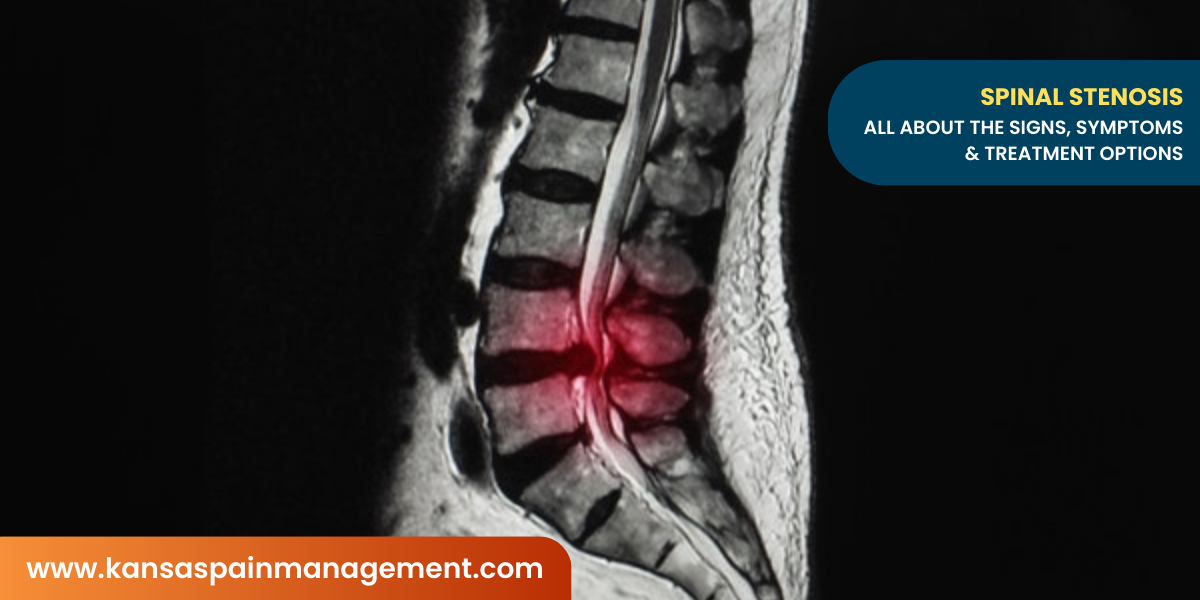
Spinal Stenosis
Spinal stenosis is a common condition that affects the spinal canal, causing narrowing of the spaces within the spine. This narrowing can put pressure and cause inflammation on the nerves that travel through the spine, leading to pain, numbness, and weakness in the affected areas.
Causes:
Spinal stenosis can be caused by several reasons, such as age-related spine degeneration, herniated discs, arthritis, bone spurs, thicker ligaments, or spinal traumas. Some people are genetically predisposed to getting stenosis, while others get it as a result of wear and tear on the spine over time.
Treatment Options:
Treatment for spinal stenosis aims to relieve symptoms, improve mobility, and enhance overall quality of life. Non-surgical approaches are often the first line of treatment and may include:
- Lifestyle Modifications: Maintaining a healthy weight, practicing good posture, and avoiding activities that worsen symptoms can help manage spinal stenosis. In severe cases or when conservative treatments fail to provide relief, surgery may be considered. Surgical options include decompression procedures, such as laminectomy or laminotomy, which involve removing the structures causing compression. In some instances, spinal fusion may be necessary to stabilize the spine.
- Medications: Nonsteroidal anti-inflammatory drugs (NSAIDs), and muscle relaxants can help manage pain and inflammation associated with spinal stenosis.
- Physical Therapy: Specific exercises and stretches can strengthen the surrounding muscles, improve flexibility, and alleviate symptoms.
- Epidural Steroid Injections: These injections deliver steroid directly into the affected area to reduce inflammation and relieve pain temporarily.
Spinal stenosis is a common condition that causes the spinal canal to narrow, causing nerve compression and other symptoms. It is frequently caused by age-related changes in the spine, although it can also be caused by injuries or genetic causes. Individuals with spinal stenosis can find relief from their symptoms and recover functionality with appropriate diagnosis and treatment, including non-surgical approaches and, if necessary, surgery. Consult your provider if you think you have spinal stenosis for an accurate diagnosis and a personalized treatment plan.
Treatment Offered By Kansas Pain Management
Kansas Pain Management offers a comprehensive pain treatment plan that is tailored to each patient’s specific needs. The first step is a thorough evaluation, which includes a medical history, physical examination, and diagnostic testing, if necessary.
Treatment options may include medications, physical therapy, injections, or surgery, depending on the underlying cause of the pain.
Kansas Pain Management also offers a range of minimally invasive procedures to help alleviate pain and restore function. With board-certified and fellowship-trained physicians, Kansas Pain Management is committed to providing the highest quality care for patients suffering from pain. You can book an appointment with us at Overland Park, Lawrence, Leavenworth/Lansing, Roeland Park, etc. We also serve nearby locations like Ottawa, Missouri, Topeka, Belton, Manhattan, Lee’s Summit, Johnson County & Kansas areas.
Book an appointment here to learn more or call us at 913-339-9437 to schedule now.
Some Of The Other Surgical Procedures We Provide:
FAQs
Spinal stenosis can be caused by age-related spine degeneration, herniated discs, arthritis, bone spurs, thicker ligaments, spinal trauma, or genetic predisposition.
The narrowing of the spinal canal compresses the nerves that pass through it, leading to nerve inflammation, pain, and mobility issues.
Symptoms may include pain, numbness, weakness, and reduced mobility due to nerve compression in the spine.
Maintaining a healthy weight, practicing good posture, and avoiding movements that worsen symptoms can help relieve discomfort.
Epidural steroid injections deliver steroids directly into the affected area to reduce inflammation and provide temporary pain relief.
Yes. Many patients find relief with non-surgical treatments, including medications, therapy, and injections before considering surgery.

